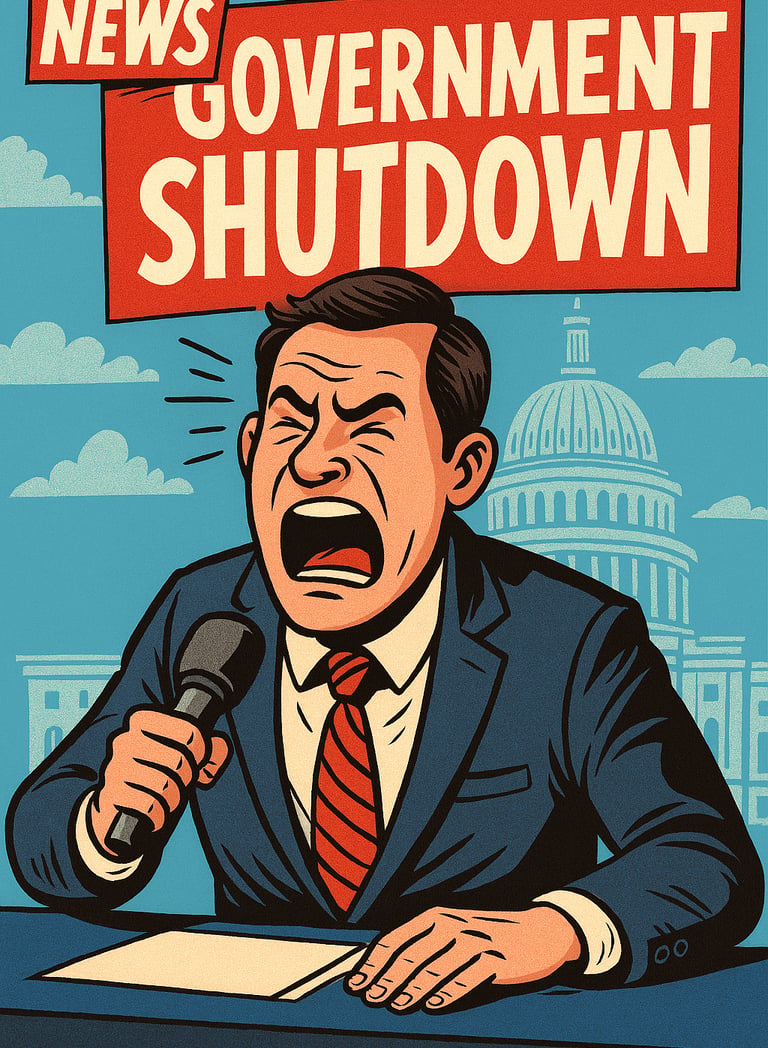Congress, Cloture, and Coffee
Still stuck in the shutdown? This witty, essential-employee breakdown explains how Congress works, why the government’s still closed, and what needs to happen next—including how the new Senate bill would reopen agencies and reverse recent federal layoffs. Humor meets clarity in this must-read explainer
NEWS
11/11/20252 min read


Congress, Cloture, and Coffee: Why the Government is Still Closed (And What Needs to Happen Next
If you’ve been refreshing the news like it’s an ATM that might finally spit out a paycheck, welcome. You are not alone. As an essential employee still clocking in while the government plays legislative limbo, I’m here to break down what is actually going on - and why that shiny “60-40 Senate vote” didn’t reopen anything but our collective confusion.
First, a Quick Recap: What is Congress and Why Is It So Complicated?
Congress is the two-chambered branch of the United States government. One side moves fast, the other side likes to think things through while sipping on metaphorical tea
The Two Chambers:
House of Representatives (Lower Chamber)
435 members
Based on the population of each state
Fast-moving, majoritarian, and occasionally chaotic
Need 218 votes to pass a bill
Senate (Upper Chamber)
100 members (2 per state)
Designed to be slow, stable, and deliberative
Most bills need 60 votes to end debate (cloture) and 51 votes to pass
Together, they must agree on the same bill before it goes to the President. Think of it like two roommates trying to agree on pizza toppings - if one wants pineapple and the other insists on anchovies, nobody’s eating.
What’s Happening Right Now (November 2025)
We are currently in Day 41 of the government shutdown, and here is the play-by-play:
Senate Passed a Deal
On Monday, Nov. 10, the Senate voted 60-40 to advance a short-term funding bill.
This bill would reopen the government through Jan. 30, 2026.
The bill includes funding for key agencies and reverses recent federal layoffs
Eight Democrats crossed the aisle to help break the filibuster.
The House Still Needs to Vote
The House could vote as early as Wednesday, Nov. 12
If they approve the Senate’s version, it goes to President Trump for signature
If they reject or delay, we’re back to square one - and yes, the vending machine stays empty.
What is Holding Things Up?:
Here is the drama behind the delay:
Healthcare Funding - The Senate bill doesn’t extend ACA subsidies, which several House Democrats oppose.
Political Pressure - House leadership is juggling internal factions and public frustration.
Shutdown Fatigue - Federal workers are unpaid, services are halted, and morale is somewhere between “meh” and “mutiny.”
What is a Filibuster, and Why Does it Matter?
A filibuster is the Senate’s way of saying, “We’re not done talking.” It’s a tactic that lets the minority party delay a vote by extending debate indefinitely. To break it, you need a cloture vote - that’s the famous 60-vote threshold. Once cloture passes, the Senate can move to a final vote with just 51 votes.
Think of it like this:
Filibuster = That friend who won’t stop telling “just one more story” when you’re trying to leave the party.
Cloture = Finally grabbing your coat and saying, “Okay, we’re really leaving now.”
Final vote = Pulling out of the driveway and flooring it toward the nearest Taco Bell.
TL;DR: What Needs to Happen Next
House votes yes → Bill goes to the President → Signed → Government reopens
House delays or rejects → Negotiations restart → Shutdown continues
Everyone panics quietly while pretending to be chill
Final Thoughts from the Front Lines
As someone still reporting for duty while the rest of the government is stuck in legislative traffic, I can confirm:
The coffee is still brewing.
The vending machine is still empty.
And the shutdown is still very much alive.
But hey, at least we’ve got a decision tree, a Senate vote, and a lot more hope. Stay caffeinated, stay informed, and maybe—just maybe—stay tuned for a signature that actually ends this thing.
Mastersgt.com is a participant in the Amazon Services LLC Associates Program, an affiliate advertising program designed to provide a means for sites to earn advertising fees by advertising and linking to Amazon.com. As an Amazon Associate, Mastersgt.com may earn from qualifying purchases.
Copyright Notice:
All content on Mastersgt.com is protected under copyright law. Unauthorized reproduction, distribution, or use of any text, images, or other materials without explicit permission is prohibited. If you'd like to share or reference a post, please provide proper attribution.